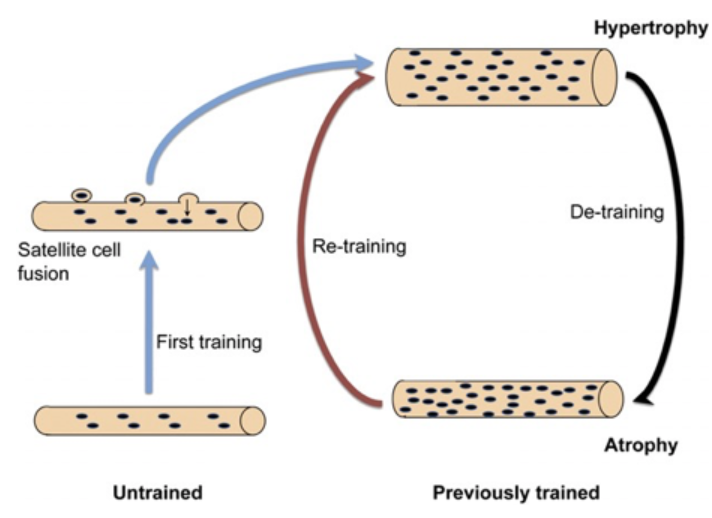Should children lift weights?
Our good pal, physio weapon and gun researcher Isobel O’Sullivan recently shared an article written by J. C. Bruusgaard et. al.
The article’s title “Myonuclei acquired by overload exercise precede hypertrophy and are not lost on detraining” sounds like quite a mouthful but proposes some incredibly valuable information for all human beings.
What does it all mean and what does it have to do with children?
We will go back a few steps to help you get your head around this.
When humans strength train, muscle hypertrophy occurs (muscle size increases). As a result of this, myonuclei (presence of nucleus within muscle cells) increases. Myonuclei quantity determines the content of DNA for gene transcription - which is an essential part of muscle growth and sustainability.
Bruusgaard’s article suggests that the increased myonuclei is sustained even during detraining and associated muscle atrophy (loss of muscle).
The image below is adopted from the original article and gives a better explanation.
This brings us back to children and weight training.
If a young child were to begin lifting weights at the age of around 10 to 12 years old (we are not talking about squatting 100kg, more body weight and light dumbells), train for 3 years, then stop training for whatever reason - they would still have the increased myonuclei over a child that hadn’t ever strength trained.
More importantly, should they begin training again at a later age, there would probably be a psychological effect on the individual's adherence to the reintroduced program. According to the research, they would find physical change (muscle growth) occurs faster - and let’s be honest, we are far more likely to adhere to something when we feel positive changes occur. If they were not to strength train again in their life, the atrophic effect of aging would be less significant compared to a person that has never strength trained.
An additional positive of starting at a young age is that your body is more susceptible to anabolic (muscle gaining) influence. This slows as you age (around 30-40 is where the shift occurs). By weight training when the body is more susceptible to adaptation the base increased in myonuclei will slow down the atrophic influence aging has on the body.
So don’t be disheartened if you didn’t strength train as a child, or if you currently don’t strength train. The message here is one of ‘get started quickly’. It is inevitable that muscle atrophy occurs as you age - the sooner you expose your body to strength training, the longer you can offset these effects.
#teamsof

